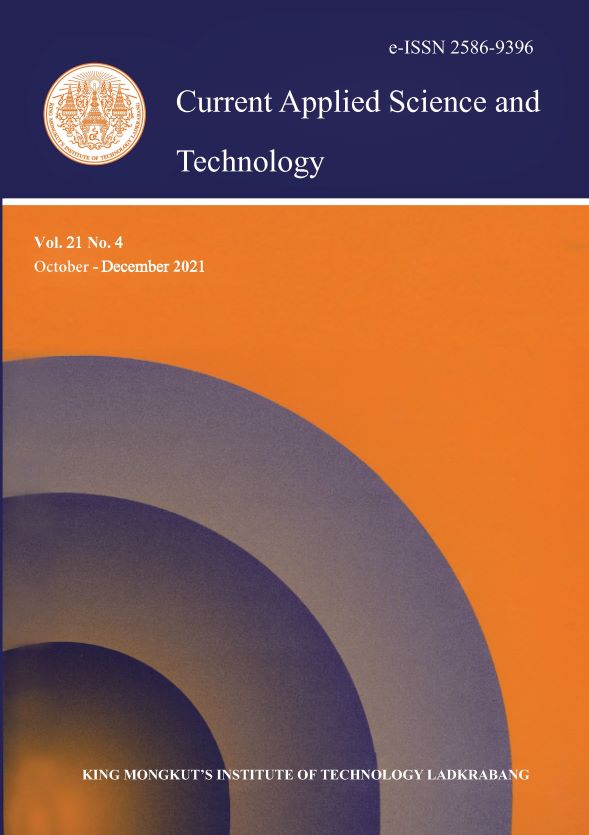Developing Agriculture Purchasing Managers’ Index for Describing Taiwan’s Agriculture Industry by Using Automatic Weighted k-means Algorithm
Main Article Content
Abstract
Although the average agricultural total output is not greater than 2% of Taiwan’s GDP, the Taiwan government still attaches great importance to the agriculture industry to ensure the food self-sufficiency rate. Taiwan still has no indicators to measure the status of the agriculture industry. This paper proposes an idea to develop Agriculture Purchasing Managers’ Index (APMI) for Taiwan agriculture industries. To reduce the effect of some statistical assumptions and to provide more clarity and direct analysis of results, this paper proposes a novel automatic weighted k-means algorithm to develop the APMI. The results of this research suggest that four variables should be included in the APMI of the pig industry, namely “Trade amount”, “Average weight per pig”, “Price per pig”, and “Slaughtered.”. Among these, “Slaughtered” and “Trade amount” are the more important variables for developing the APMI of the pig industry. The proposed model offers three advantages: (a) it can be successfully used to construct APMI, (b) It can automatically search the weight of each variable without any human judgment in APMI, and (c) It avoids some statistical assumptions and explains the results more clearly and directly. Thus, the proposed model can be used to construct used APMI proposed in this work, and it describes the status of the agriculture industry.
Keywords: pig industry; trade of pigs; automatic weighted selection
*Corresponding author: Tel.: (+886) 7-8100888 # 25322
E-mail: cplee@nkust.edu.tw
Article Details
Copyright Transfer Statement
The copyright of this article is transferred to Current Applied Science and Technology journal with effect if and when the article is accepted for publication. The copyright transfer covers the exclusive right to reproduce and distribute the article, including reprints, translations, photographic reproductions, electronic form (offline, online) or any other reproductions of similar nature.
The author warrants that this contribution is original and that he/she has full power to make this grant. The author signs for and accepts responsibility for releasing this material on behalf of any and all co-authors.
Here is the link for download: Copyright transfer form.pdf
References
Ou, S.-L., 2012. Forecasting agricultural output with an improved grey forecasting model based on the genetic algorithm. Computers and Electronics in Agriculture, 85, 33-39.
Xiong, T., Li, C., Bao, Y., Hu, Z. and Zhang, L., 2015. A combination method for interval forecasting of agricultural commodity futures prices. Knowledge-Based Systems, 77, 92-102.
Lee, C.-P., 2017. Reduced the risk in agriculture management for government using support vector regression with dynamic optimization parameters. LEX LOCALIS - Journal of Local Self-Government, 15, 243-261.
Jheng, T., Li, T. and Lee, C.-P., 2018. Using hybrid support vector regression to predict agricultural output. Proceedings of 2018 27th Wireless and Optical Communication Conference (WOCC), 30 April-1 May 2018, 1-3.
Nieh, S.-C., Lin, W.-S., Hsu, Y.-H., Shieh, G.-J. and Kuo, B.-J., 2014. The effect of flowering time and distance between pollen source and recipient on maize. GM Crops & Food, 5, 287-295.
Higgins, A., Prestwidge, D., Stirling, D. and Yost, J., 2010. Forecasting maturity of green peas: An application of neural networks. Computers and Electronics in Agriculture, 70, 151-156.
Lee, C.-P., Shieh, G.-J., Yiu, T.-J. and Kuo, B.-J., 2013. The strategy to simulate the cross-pollination rate for the co-existence of genetically modified (GM) and non-GM crops by using FPSOSVR. Chemometrics and Intelligent Laboratory Systems, 122, 50-57.
Tien, T.-L., 2018. The Trial Compilation of Agriculture Purchasing Managers’ Index for Taiwan: The Case of Taiwanese Hog Industry. Taichung: National Chung-Hsing University.
Chen, S.-H., 2011. The Compilation of Purchasing Managers’ Index for Taiwan. Taipei: Chung-Hua Institution for Economic Research.
Kauffman, R.G., 1999. Indicator qualities of the NAPM report on business®. Journal of Supply Chain Management, 35, 29-37.
Koenig, E.F., 2002. Using the purchasing managers’ index to assess the economy’s strength and the likely direction of monetary policy. Economic and Financial Policy Review, 1(6), 1-14.
Harris, E.S., 1991. Tracking the economy with the purchasing managers’ index. Federal Reserve Bank of New York Quarterly Review, 16(3), 61-69.
Lindsey, M.D. and Pavur, R.J., 2005. As the PMI turns: A tool for supply chain managers. Journal of Supply Chain Management, 41, 30-39.
MacQueen, J., 1967. Some methods for classification and analysis of multivariate observations. Proceedings of Proceedings of the Fifth Berkeley Symposium on Mathematical Statistics and Probability, Berkeley, California, 281-297.
Li, Y.-g. and Huang, Y.-s., 2013. Product requirements cluster analysis based on K-means. Proceedings of 20th International Conference on Industrial Engineering and Engineering Management, Berlin, Heidelberg, 455-461.
Thiyagarajan, R., Thangavel, K. and Rathipriya, R., 2013. Recommendation of web pages using weighted K-means clustering. International Journal of Computer Applications, 86, 44-48.
Thangadurai, D.K., Uma, M. and Punithavalli, D.M., 2010. A study on rough clustering. Global Journal of Computer Science and Technology, 10(5), 55-58.
Lee, C.-P. and Lin, W.-S., 2016. Using the two-population genetic algorithm with distance-based k-nearest neighbour voting classifier for high-dimensional data. International Journal of Data Mining and Bioinformatics, 14, 315-331.


